My second farm was Pholia Farm just outside of Rogue River, Oregon.
The Farm
Pholia Farm is a goat dairy that makes hard cheeses from raw goat milk. There are two kinds of goats: long-eared Nigerian-Dwarf and short-eared LaMancha. The farmers are Gianaclis and Vern. The farm is on a twenty-four acre parcel of the two hundred and twenty-five acres of land that Gianaclis grew up on. Gianaclis had cows growing up. When her young daughter wanted a 4-H project, they got her a goat since a cow would be too big. That was the first step to having a goat dairy. They moved back to Oregon after Vern retired from the military. Gianaclis is an artist. How to make money? They decided to get goats and make cheese. The creamery opened in 2006. Gianaclis is using her expertise to educate others on goat dairies and making cheese. She has written well-researched guides to cheese making and running a goat dairy. She’s currently working on books on raw milk and the process of aging cheese.
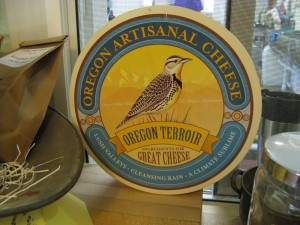
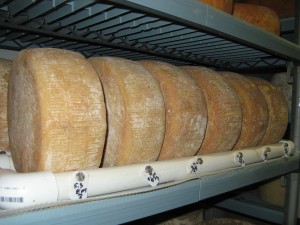
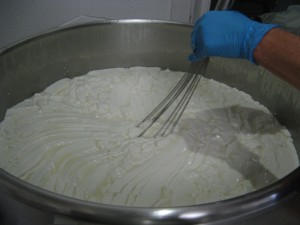
Cutting the curds

Putting the cheese in the molds
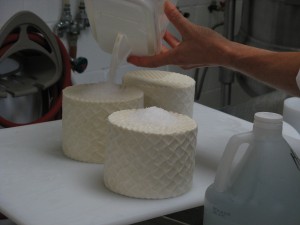
Preparing cheese for the brine bath
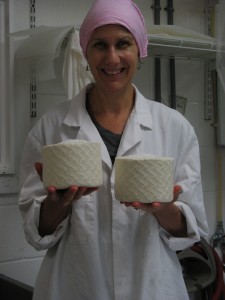
Fresh out of the molds
The Farming Experience
My days started at 5:40 am just as it was getting light out. I tossed on a shirt, shorts and socks, stepped into my rubber boots, and parted the blanket that covered the door of the unfinished strawbale WWOOFer’s bungalow. Above the barn is the main living space with a kitchen, living room and two offices. We had coffee or tea to wake up before starting the morning chores. At 6:30, we went down to the barn. Opening the door to the barn set off a loud chorus of ‘baas,’ ‘maas,’ and ‘waas.’ Gianaclis went into the milking parlor to clean and prepare the vat and hoses. I separated the Nigerian Dwarf goats from the bigger LaMancha goats so they’d be organized for milking. This involved closing the outside pen doors to the Nigerian side and taking out any LaManchas that had wandered in. They knew the drill and usually walked themselves to the door and left. Then I put alfalfa flakes in the Nigerians’ feed troughs, opened one of the pen doors and yelled “Breakfast ladies!” The stampede started. I quickly learned to open the door fast and wide, otherwise their fat bellies wouldn’t be able to get through and there’d be a big traffic jam. Any short-eared LaManchas that tried to come in had to be refused service. And any long-eared Nigerians who were hanging out instead of coming in for breakfast had to be rounded up. After the Nigerians were all in their pen, the LaManchas got their alfalfa and got to be milked first.
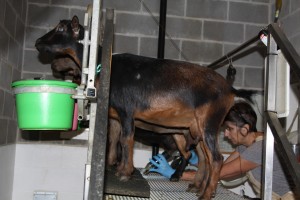 The milking is done by machine. There were thirty-two goats that needed milking which would have made for very tired arms if they were hand-milked. Four goats at a time walked up a ramp to the milking parlor. There were four buckets of grain behind a metal device that locked each goat’s head into place as she put her head through it to eat the grain. As the girls munched, their two teats were cleaned and dried, and then they were attached to a pump that sucked the milk into a vat that was sitting in a chilled cooler in a room next to the milking parlor. When all four were milked out, Gianaclis said, “Thank you ladies!,” their heads were released, and they marched back down the ramp and into a pen to continue breakfast. Then the next four came up the ramp. Milking, from getting everything ready to final cleanup, took two hours.
The milking is done by machine. There were thirty-two goats that needed milking which would have made for very tired arms if they were hand-milked. Four goats at a time walked up a ramp to the milking parlor. There were four buckets of grain behind a metal device that locked each goat’s head into place as she put her head through it to eat the grain. As the girls munched, their two teats were cleaned and dried, and then they were attached to a pump that sucked the milk into a vat that was sitting in a chilled cooler in a room next to the milking parlor. When all four were milked out, Gianaclis said, “Thank you ladies!,” their heads were released, and they marched back down the ramp and into a pen to continue breakfast. Then the next four came up the ramp. Milking, from getting everything ready to final cleanup, took two hours.
While the goats were being milked, I fed the rest of the goats and the turkeys. There was one pen of three-month-old babies. They weren’t that small, but they did have young-looking faces. When I came down with the alfalfa, they huddled by the fence and cried like they were starving. It was cute. Off in the distance, I could hear the other young does crying in unison and the bucks blowing. (It sounds like a snort.) I enjoyed listening to their voices. They made a variety of sounds. My favorites were a ‘he he he’ that sounded like the Joker from Batman and the young buck Sean Spencer who made a ‘what!’ sound when he was chasing does. His ‘what!’ sounded like what he’d say if he was slipping on ice and going over the side of a mountain; it sounded like a startled gargle. The five turkeys were the only chicks left at the store in the spring, not exactly what Gianaclis wanted. They are odd looking things: large white bodies with blue heads and red snoods. They’d come running, feathers flying, to get their brewer’s grain, the leftover grain from brewing beer. (Will they taste like beer?) I named them Thanksgiving, Christmas, New Year’s, Birthday and Special Occasion. The other odd-looking animals were the older bucks. They look like woolly mammoths. Their fur grows long, especially their beards, and they get really stinky. I liked rubbing their hairy heads as they contentedly ate their hay. They had sweet eyes. The last part of feeding was to let the bucks out of their little pen up at the ‘Island of Misfits.” An old horse, a llama, and some goats that belong to another person live on the island. The horse and llama protect the goats from the cougars that live in the area. The misfits don’t have it too bad; they’ve got the biggest grazing area and nobody to bother them.
After the feeding, came the glamour job: cleaning the milking does’ pen. It was actually rather meditative. I used a garden rake to move turds the size of ball bearings. The rake left a Zen garden pattern in the dirt. It was when my best thoughts came to me. I had a lot of hairy helpers. Pancake, a little beige LaMancha, knew just where to stand to be in the way. Jelly and Miel, white Nigerians, quietly stood behind me so I could turn and trip over them. Slurpy, another beige LaMancha, chewed on the handles of the tools and wheelbarrow. Love Shack, a brown Nigerian, jumped in the wheelbarrow. And many others stood in a circle around me chewing on my pants, wanting attention, and just generally being in the way. Once the milking does’ pen was clean it was time for breakfast.
Breakfast was do-it-yourself. I was partial to homemade goat’s milk yogurt with cereal and honey. Then there was free time for me until afternoon feeding at 4:30. There isn’t much to do in this area so I stayed on the farm most days. I watched Gianaclis make feta and hard cheese on Tuesdays and Thursdays, picked blackberries to make jam, read, and wasted time on the Internet. I also took the milking does for walks in the afternoons. When I walked out of the barn, they hoped it meant a walk. They all gathered by the open gate and waited for me to walk over. Then I’d lead a line of goats down past the pens, into the pasture and a little ways into the woods. Vivian, a tall black LaMancha, would frequently walk next to me. She looks like a brontosaurus. The goats would eat the leaves off of most anything. They sucked them off like they were eating spaghetti. Fallen, dried leaves were also a favorite; Gianaclis called them ‘potato chips.’ Eventually, Milo, their guardian dog who looked like a lovable polar bear, would walk out of the forest and scare them back to their pen. The walk was over so I’d meander back and look in at Sean Spencer and little Makamae.
- Milo and Vivian
Four o’clock was Happy Hour, time for a glass of wine. Evening feeding at 4:30 went quickly. Then it was time for a shower, dinner and a Netflix movie. Bedtime was around 9:00.


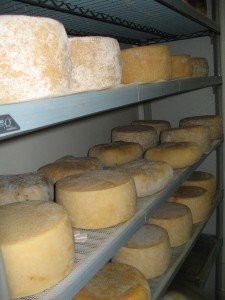
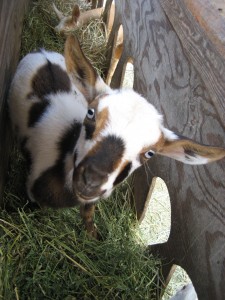
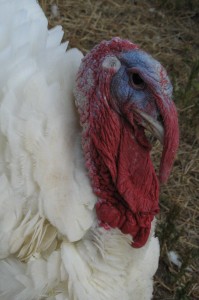
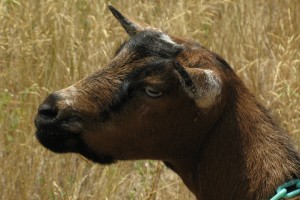
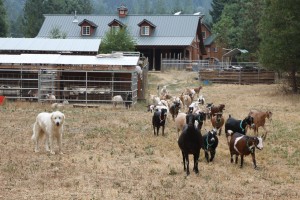
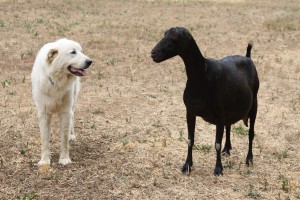
Cool stuff, Sarah! Waiting for another chapter..!